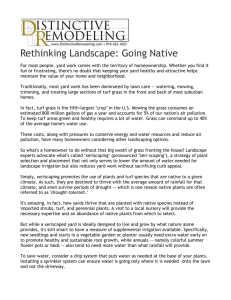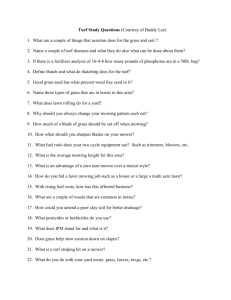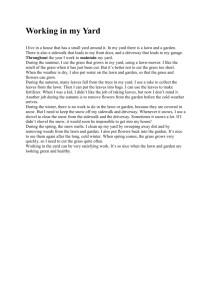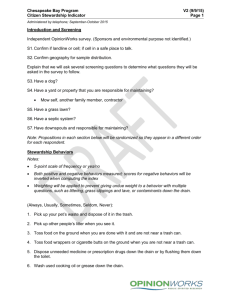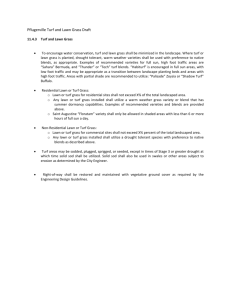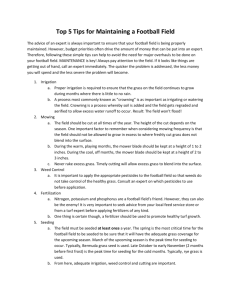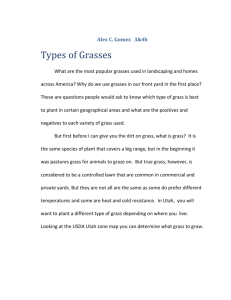ms-word file
advertisement
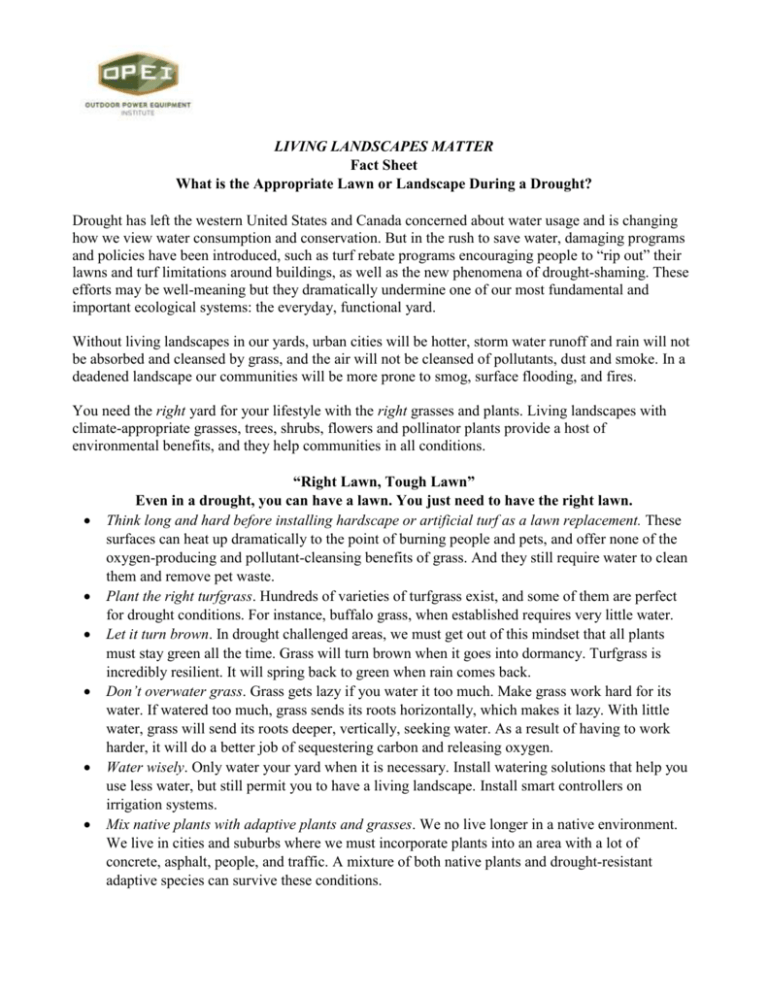
LIVING LANDSCAPES MATTER Fact Sheet What is the Appropriate Lawn or Landscape During a Drought? Drought has left the western United States and Canada concerned about water usage and is changing how we view water consumption and conservation. But in the rush to save water, damaging programs and policies have been introduced, such as turf rebate programs encouraging people to “rip out” their lawns and turf limitations around buildings, as well as the new phenomena of drought-shaming. These efforts may be well-meaning but they dramatically undermine one of our most fundamental and important ecological systems: the everyday, functional yard. Without living landscapes in our yards, urban cities will be hotter, storm water runoff and rain will not be absorbed and cleansed by grass, and the air will not be cleansed of pollutants, dust and smoke. In a deadened landscape our communities will be more prone to smog, surface flooding, and fires. You need the right yard for your lifestyle with the right grasses and plants. Living landscapes with climate-appropriate grasses, trees, shrubs, flowers and pollinator plants provide a host of environmental benefits, and they help communities in all conditions. “Right Lawn, Tough Lawn” Even in a drought, you can have a lawn. You just need to have the right lawn. Think long and hard before installing hardscape or artificial turf as a lawn replacement. These surfaces can heat up dramatically to the point of burning people and pets, and offer none of the oxygen-producing and pollutant-cleansing benefits of grass. And they still require water to clean them and remove pet waste. Plant the right turfgrass. Hundreds of varieties of turfgrass exist, and some of them are perfect for drought conditions. For instance, buffalo grass, when established requires very little water. Let it turn brown. In drought challenged areas, we must get out of this mindset that all plants must stay green all the time. Grass will turn brown when it goes into dormancy. Turfgrass is incredibly resilient. It will spring back to green when rain comes back. Don’t overwater grass. Grass gets lazy if you water it too much. Make grass work hard for its water. If watered too much, grass sends its roots horizontally, which makes it lazy. With little water, grass will send its roots deeper, vertically, seeking water. As a result of having to work harder, it will do a better job of sequestering carbon and releasing oxygen. Water wisely. Only water your yard when it is necessary. Install watering solutions that help you use less water, but still permit you to have a living landscape. Install smart controllers on irrigation systems. Mix native plants with adaptive plants and grasses. We no live longer in a native environment. We live in cities and suburbs where we must incorporate plants into an area with a lot of concrete, asphalt, people, and traffic. A mixture of both native plants and drought-resistant adaptive species can survive these conditions. Evolve your yard. Incorporate pollinator plants for bees, butterflies, and hummingbirds. Even in the desert a host of plants flower. Plant to slow and capture water. Water sheets off hard surfaces, asphalt and other hardscapes in cities and suburbs. Grass and plants will slow down and capture this water. Use grasses that are traffic ready. Buffalo grass and Bermuda grass are drought-tolerant options, but they also can survive foot traffic, children’s play and pets. Remember nature starts at your backdoor. Your yard may also be a living habitat for insects, worms, and spiders. These creatures provide food for birds and small mammals like squirrels. How you take care of your yard will impact them too.
